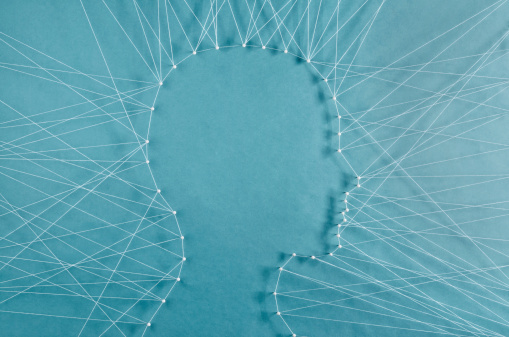The Undiagnosed Disease Network (UDN)
The undiagnosed disease network (UDN) is a new initiative to provide support for people who have not yet been diagnosed with a disease. Its goals are to help patients with undiagnosed medical conditions, but its work also applies to a broader health care system. The network hopes to demonstrate the usefulness of new diagnostic approaches and integrate them into health care systems. Its research suggests that some of the diagnoses made could have been prevented with better community support, while others were made using UDN resources.
What is the national undiagnosed disease network?
The Undiagnosed Diseases Network (UDN) was created by the National Institutes of Health (NIH) in 2014 to improve diagnosis of rare and ultra-rare diseases. The UDN is made up of clinicians and researchers from all over the country who work to understand the causes and mechanisms of these diseases. It has already accepted 601 participants and has already identified 31 previously unknown syndromes and diseases.
The Undiagnosed Diseases Network, or UDN, is funded by the National Institutes of Health (NIH). It includes seven clinical sites, two sequencing cores, and a coordinating center. In addition to this, it recently added a metabolomics core and a central biorepository. The UDN Gateway opened on September 16, 2015. These clinical sites offer comprehensive access to a network of highly skilled clinicians. Diagnostic evaluations are provided at no cost to patients.
The UDN is a collaborative research program funded by the National Institutes of Health Common Fund. It brings together leading clinicians and researchers from all over the country to investigate rare diseases. Through the use of new technologies, the network aims to improve diagnosis and treatment for these patients.
What is the most common undiagnosed disease?
Undiagnosed diseases affect nearly twelve million Americans every year, with minorities and women more likely to be misdiagnosed than men. As a result, over 40,000 people die each year from misdiagnosis. The most common undiagnosed diseases include cancer, vascular events, and infections. Colon and breast cancers are among the most common.
Undiagnosed diseases are often difficult to diagnose. Fortunately, a wide range of medical tests are available to help physicians make accurate diagnoses. Genetic testing is often an important part of the diagnostic process for undiagnosed patients. The National Human Genome Research Institute has published a guide for those who wish to learn more about genetic testing. Another helpful resource for patients and their families is the rare disease community website RareConnect. RareConnect connects patients with undiagnosed diseases to share information, tips, and experiences.
Genetic testing can help identify rare diseases. Genetic experts can also help with the diagnosis. There are 7,000 rare diseases that are currently recognized, and there are many undiagnosed conditions that affect countless people. Genetic tests are a must-have for proper diagnosis, and the Undiagnosed Diseases Network is working to get people diagnosed. If you’re suffering from a rare disease, seeking a diagnosis can save your life.
What is the Undiagnosed Diseases Program?
The Undiagnosed Diseases Network is a research study funded by the National Institutes of Health Common Fund. Its goal is to solve medical mysteries through collaboration between clinical and research experts. Researchers are using cutting-edge technologies to solve mysteries related to undiagnosed diseases.
The Undiagnosed Diseases Network is comprised of seven clinical sites, two sequencing cores, a coordinating center, and a central biorepository. The network also features a new Undiagnosed Diseases Network Gateway, which opened September 16, 2015. The Undiagnosed Diseases Network was founded to help identify undiagnosed diseases, and to help patients find a cure.
The Undiagnosed Diseases Network is funded by the National Institutes of Health, and brings together expert clinical researchers in different locations across the country. Although most patients will come from Pennsylvania and New Jersey, applicants can request to be treated at any of the UDN sites. The researchers work with patients to discover the cause of their symptoms and develop treatment options for the underlying disease.
How common are undiagnosed medical conditions?
Many people who have been unable to get a diagnosis are waiting for a test or referral to a specialist consultant to discover what is causing their symptoms. Luckily, there is a way to help patients get a diagnosis – through the Undiagnosed Diseases Network. The Undiagnosed Diseases Network is a national organization that aims to make sure patients get the diagnosis they need. The process of getting diagnosed can take weeks or months, and in some cases it may never happen at all.
There are many factors involved in the process of diagnosis, including genetic testing, imaging, and a complete medical history. The process also involves physical examinations and family evaluations. Researchers are aiming to develop a system for detecting genetic abnormalities that could be indicative of a rare disease.
The Undiagnosed Diseases Network is a research project backed by the National Institutes of Health’s Common Fund. The research team has twelve clinical centers to find answers for patients with unknown diseases. Using genetic analysis of fruit flies, nematode worms, and zebrafish, they hope to discover what ailment is and develop a cure.
What to do when doctors can’t find what’s wrong?
Having a disease network that doctors can’t identify can be frightening and upsetting. While it’s not uncommon for doctors to find a symptom of an undiagnosed condition, it can be even more difficult to understand what the underlying cause of the symptoms is. It’s crucial to seek second opinions and coordinate the care of your entire health care team. Once you find a second opinion, you should consult with your primary care provider and then make a decision. You can also explore clinical trials and research studies to get further information. The Undiagnosed Diseases Network is one way to do this.
The first thing to remember is that your healthcare provider wants to find a proper diagnosis for you, as this will help them determine the right course of treatment for you. However, knowing what you don’t have is much more useful than knowing what you do have. While you may be frustrated with your healthcare provider for not being able to find a diagnosis for your disease, you should consider the tactics discussed here.
What illnesses do not show in blood tests?
Many blood tests do not show symptoms of specific illnesses, but they can still be useful in evaluating the health of organs and detecting genetic disorders. Blood tests are also necessary to monitor your overall health and check for conditions that may be life-threatening, such as high cholesterol. While these tests are not always able to diagnose disease, they can detect problems early enough to treat them.
Blood tests are among the most common diagnostic tools available today. They can determine cholesterol levels, thyroid function, and other health conditions. They can also be used to screen for heart disease, diabetes, and cancer. Regular tests may also reveal if you have antibodies against certain viruses. Blood tests can also reveal if you have a chronic infection or are at risk of developing a serious disease.
What diseases are commonly misdiagnosed?
The most common diseases that are missed by doctors are heart attacks, cancers, and infections. These three categories of misdiagnosed conditions cause the most harm. Despite this high rate, researchers hope that these mistakes will be reduced over the next decade. However, it is important to know that misdiagnosed diseases may not always lead to harmful consequences.
According to the Institute of Medicine, about one-fourth of all patients in the U.S. have undergone misdiagnosis at some point in their lives. This number is alarming, as more than a million people are being treated for the wrong disease every year. Misdiagnosed diseases may be due to incomplete medical records, insufficient testing, or lack of information on the patient’s family history. Misdiagnosed illnesses can lead to unnecessary treatments or even death.
Another disease that is commonly misdiagnosed is pulmonary embolism. This is a type of blood clot that can form in a lung artery and cause symptoms like shortness of breath, coughing, or chest pains. Misdiagnosis occurs most often among emergency department patients. Thyroid disorders, which cause fatigue, constipation, depression, or mood changes, are also commonly misdiagnosed. These symptoms can be mistaken for heart attack or pneumonia.
Which diseases Cannot be diagnosed?
The Undiagnosed Diseases Network (UDN) is a network of physicians who help identify and diagnose rare and elusive diseases. The network has 12 clinical centers and is funded by the National Institutes of Health. Currently, it has identified over 7,000 rare and elusive diseases. Its mission is to apply a multidisciplinary approach to the discovery of new, incurable diseases.
The network focuses on rare and ultra-rare diseases. Its goal is to find a diagnosis for undiagnosed patients and provide answers to their families. As many as 1 in 12 Americans suffer from undiagnosed disease, this problem is often devastating, preventing patients from receiving treatments, clinical trials, and medical surveillance.
Using genetic analysis, the network is helping doctors better understand how to diagnose rare diseases. Genetic testing is a vital part of the diagnostic workup for undiagnosed patients. The Undiagnosed Diseases Network has created a resource guide to genetic testing. In addition, the National Human Genome Research Institute has created a guide for individuals and families coping with rare diseases. The rare disease community has also established a platform called RareConnect to connect rare disease patients and families and share their experiences.



